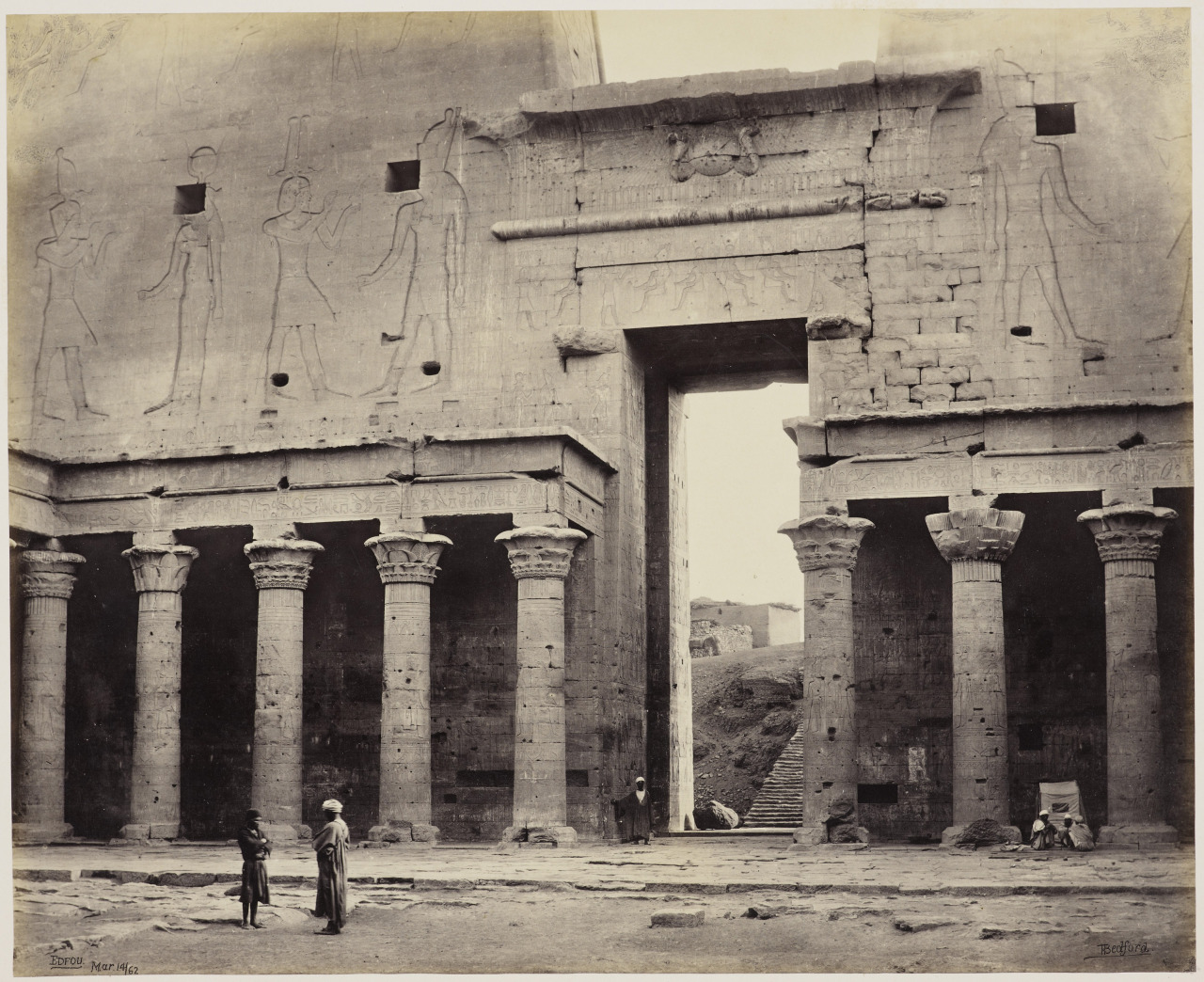Sony has announced its Alpha 7 II, which the company has managed to keep very close to its vest. The big story on this 24MP full-frame mirrorless is its 5-axis sensor-shift image stabilization - the first that we’ve seen in a full-frame camera. Sony claims that this IS system can reduce shake by 4.5 stops using the CIPA standard. The Hybrid AF system has also been improved upon, offering 30% faster speeds and a 1.5X improvement in tracking. The a7 II also sports a larger grip, new front dial, and sensibly relocated shutter release.
Temple of Horus, Edfu, Egypt, March 1862, showing Francis Bedford’s darkroom Royal Collection Trust / (c) Her Majesty Queen Elizabeth II 2014
A collection of photographs taken in 1862 during the Prince of Wales’ tour of the Middle East, showing historical figures and sites, has gone on display at Buckingham Palace in London. Taken by Francis Bedford, who was the first photographer to ever accompany a royal tour, the show comprises almost 100 original prints from the 200 images that Bedford shot at the time, and which were given to the Prince at the end of the trip.
The photographs document the progress of the party over the course of four months as they travelled from London to Venice by train, and on to Alexandria aboard the Royal Yacht Osbourne, and on through Egypt, Palestine, Syria, Lebanon, Turkey and Greece on horseback.
How Kodak's Shirley Cards Set Photography's Skin-Tone Standard →
Named for the original model — an employee of Kodak — the portraits were used by photo labs to calibrate printers. But until the 1970s, that model was always white.
Friday listening/reading: NPR’s fascinating look at Shirley, the original skin tone model for all of its photo printing.
>Photos of dogs floating in mid-air will make your day
In ‘Freestyle Series’, German photographer Julia Christe captures the bewildered/anxious/aloof expressions of different dogs as they jump for an object outside of the frame. Each dog’s mid-air photograph will put a smile on your face as their fur, tail, legs, and ears go flying off in the most awkward ways possible. No dogs were hurt in the making of this adorable photo series.
Check out the Samsung NX1 samples gallery we just posted, shot by DPReview Editor Barney Britton:
http://www.dpreview.com/galleries/reviewsamples/albums/samsung-nx1-real-world-samples#page=2

Photo by Marcin T Jocefiak
An exhibition of images that were rejected by the UK’s National Portrait Gallery is about to go on show in London, organized by Portrait Salon. In its fourth year, the organization will display 70 portraits from a submission of 1184 photographs, all of which have failed to make the shortlist for the 2014 Taylor Wessing Photographic Portrait Prize – a global portrait competition hosted by the National Portrait Gallery.
This year the Taylor Wessing exhibition, which costs £26 per picture to enter and has a top prize of £12,000, contained only 60 images from a submission of 4193. The Portrait Salon, which is free to enter, was established in the belief that there are far more than the shortlisted images worth displaying, and the salon opens for entries the day unsuccessful photographers receive their rejection letters from the Taylor Wessing competition.
While the Portrait Salon is at pains to point out that the Taylor Wessing Prize is highly prestigious, many photographers feel the judging of the prize, formally the Schweppes Photographic Portrait Prize and the John Kobal Photographic Portrait Award, is out of touch and the reasons winning entries are chosen is sometimes considered baffling. The images selected by the Portrait Salon are usually deemed more accessible and enjoyable.
The Portrait Salon show opens at the Four Corners Gallery in London, and then travels to Bradford, Wales, Edinburgh, Birmingham and Bristol. For more information visit the Portrait Salon website, where winners of previous years can be seen. This year’s will be online soon.
The Taylor Wessing Portrait Prize exhibition will be held at the National Portrait Gallery, London, between 13th November and 22nd February. There is more information on the Taylor Wessing website.
Leica has built up a significant reputation since it created its first 35mm film camera 100 years ago. That reputation means different things to different people, and hangs over every new model its name is applied to. The Leica X (Typ 113) is the company’s latest fixed-lens APS-C camera. Designed, developed and built by the German company, it commands a substantial price tag. So what’s it like to shoot with and what do you get for your money? We handed the camera to two photographers to see what they thought:
http://www.dpreview.com/articles/4388590157/a-second-glance-two-takes-on-the-leica-x
When we review high-end DSLRs, one of the most common requests we receive is to get them into the hands of professional photographers that work in the kinds of environments for which they were designed. That’s why when we received the Canon EOS 7D Mark II we joined up with Adam Jones, a professional wildlife and nature photographer, to see what he makes of the new camera. Adam works with Canon as an Explorer of Light and has been using an EOS 7D Mark II for the past few weeks.
Panasonic Lumix DMC-GM5 real-world samples gallery posted →

It’s pretty easy to forget you’re carrying the tiny Panasonic GM5, but when golden hour arrives it’s nice to have at your side.







